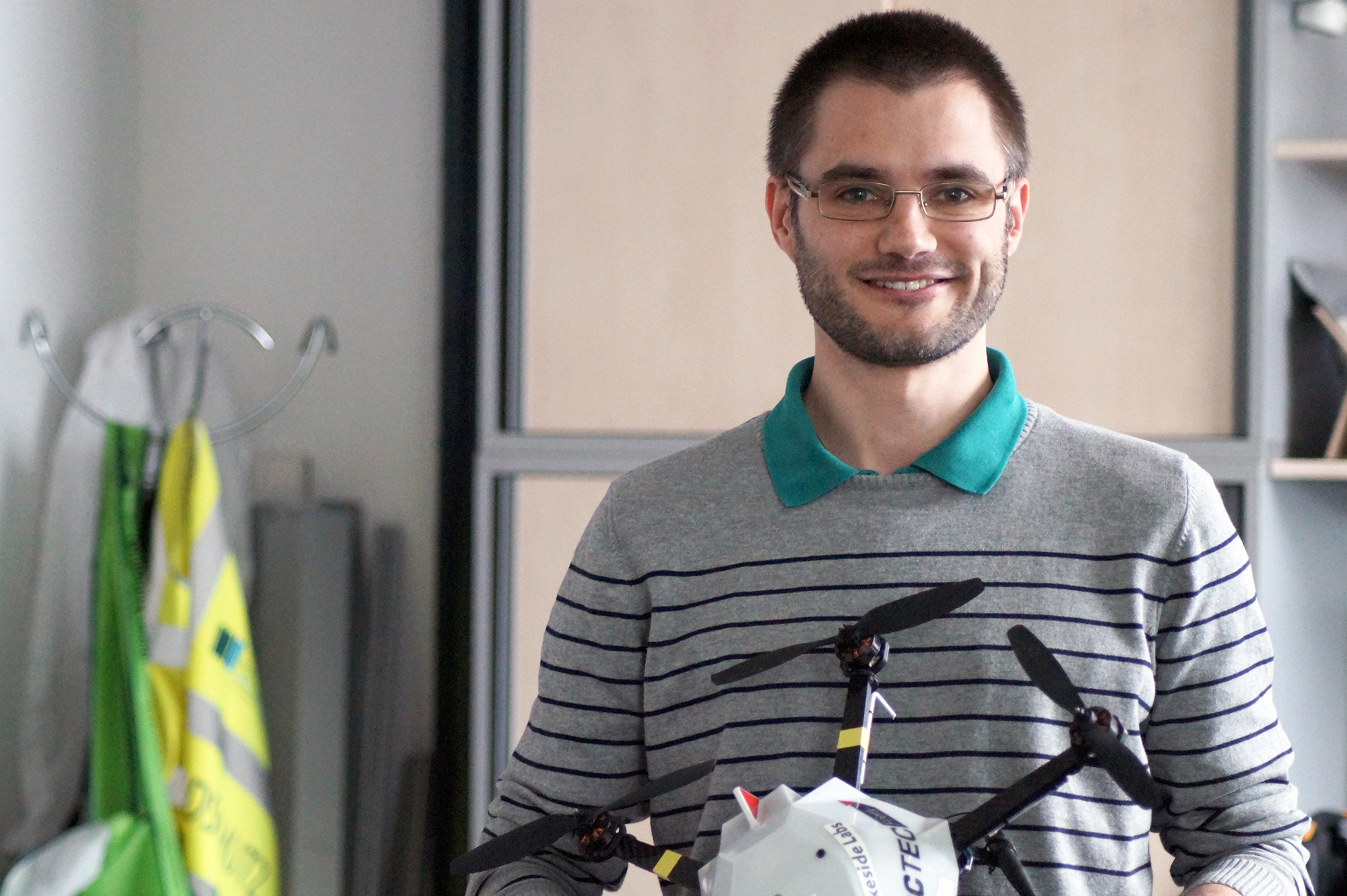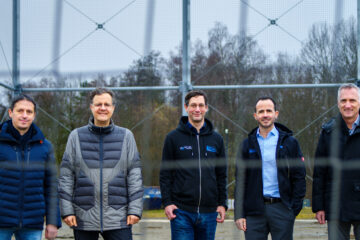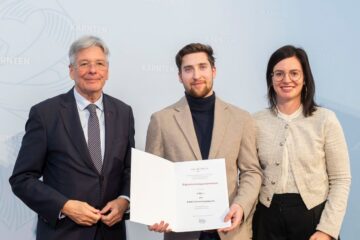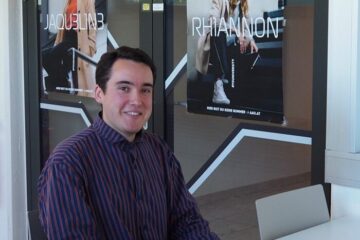
A forest is ablaze: Before the fire service can even commence fire-fighting operations, an overview is required. This could be an opportunity for the deployment of drone swarms, dispatched to survey the affected area from the air and to take photos. But how do the drones know which paths they should ideally survey? Jürgen Scherer is working on improving the process of path planning for drone swarms.
Paths require planning and communications, both amongst the drones and between the drones and the base station, need to be carefully staged. After all, as Jürgen Scherer, doctoral student at the Department of Networked and Embedded Systems, tells us, “it is really quite tricky to achieve an ideal performance from fleets of drones employed in a task like this.” For one, the drones must keep a certain proximity to one another while travelling, in order to maintain communications. Furthermore, the energy resources of these small flying objects (Unmanned Aerial Vehicles, UAV) are limited, which is why they repeatedly return to the base station for battery replacements. Sometimes this requires other members of the fleet to accompany the drone, in order to remain in close proximity. And, ideally, all of this should function autonomously, as far as possible.
Along with his colleagues, Jürgen Scherer places the emphasis on communication: “We have conducted experiments in order to analyse aerial wireless communication. These allow us to derive characteristics, which we can subsequently pay heed to during the process of path planning.” Under the leadership of Bernhard Rinner, the research group focuses on “persistent surveillance”, in other words, on the continuous monitoring of an area by drones, offering a reliable performance despite combined limitations in terms of communications and battery life. Working on his doctoral thesis, Scherer has already completed a significant proportion of the experiments; his focus has now turned to pouring the acquired knowledge into words for his thesis.
The aim is to move one step closer to the meaningful deployment of drones to support the emergency services. Certainly, much remains to be done, according to Scherer: “I want to know how we can get drones to fly in a truly autonomous fashion. This is still far from being cut and dried.” There are also a number of issues to be solved in terms of the practical implementation, before these tiny flying objects can become genuinely helpful comrades in hazardous situations: For example, many areas are still without reliable GPS coverage; however, converting the drones to a camera-based form of navigation without GPS leads to problems in the case of fires, as the cameras cannot operate adequately due to the development of smoke. The wind also takes it toll on the drones. As far as Scherer is concerned, he aims to “develop a supporting drone system that works in such a way that – in an emergency situation – the intervention of the incident commanders is minimized, while the usefulness of the UAVs is maximised.”
Working towards this goal, Jürgen Scherer hopes to make many more contributions in the future, ideally in the spheres of academic or industrial research. As someone who used to run his own business for software development and programming together with friends before taking up his position as doctoral candidate, he has come to appreciate the academic environment: “It is possible to explore a discipline in its full breadth. In the practical world, one does whatever is necessary to earn money, but that often restricts the scope of vision. The academic world offers greater flexibility, and that permits the exploration of areas that are, at least initially, closed off to those in the everyday practical field.”
A few words with … Jürgen Scherer
What would you be doing now, if you had not become a scientist?
Presumably, I would still be developing software.
Do your parents understand what it is you are working on?
I’m not entirely sure; maybe this article will help.
What is the first thing you do when you arrive at the office in the morning?
I open the window.
Do you have proper holidays? Without thinking about your work?
It’s not possible to stop thinking about work completely. Nevertheless, I still manage to switch off.
What makes you furious?
Reading a newspaper.
What calms you down?
Reading a book.
Who do you regard as the greatest scientist in history, and why?
It isn’t easy to choose just one. One of the greatest scientists, without a doubt, was Galileo Galilei, because he was a polymath on the one hand, who made important contributions in the fields of mathematics and astronomy. On the other hand, he is regarded as the founder of modern natural sciences, which is characterised by the elements of mathematisation, experimentation and abstraction.
What are you embarrassed about?
That is something I’d prefer to keep to myself.
Why do so many people fear the technical sciences?
If you mean the question of why humans fear technology, it may be because, quite rightly, it is seen as a threat rather than an asset; just think of the loss of the private sphere due to monitoring, or the loss of jobs due to automation. In part, it is probably also due to a lack of education; for instance, many people do not trust a computer to safely steer a car, and would rather not relinquish control.
What are you afraid of?
That advancing automation and technical development may not benefit everybody.
What are you looking forward to?
The successful completion of my doctoral studies, of course.




